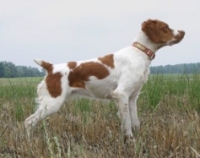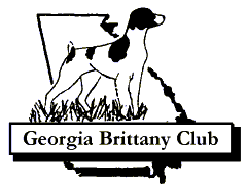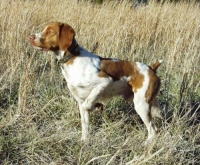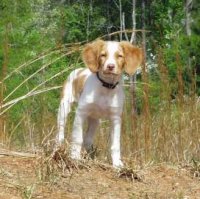|
Once
all of the entries are in and the drawing completed a "brace
sheet" is printed and distributed on the day of the trial. This
sheet will list the dogs and the handlers in the running order as
determined by the drawing.
THE
START
Plan to get up at first light! The course can be:
A Loop
You end where you start |
Out
and Back
you leave with one brace and come back with a
different one |
Continuous
A "dog wagon" follows with kennels / crates and
dogs. At the end of a specified time (30 min. to 1.5 hours) the
first brace is picked up and a new brace is put down. This is
continuous throughout the day. |
And
you better plan for the weather. The trial goes on rain, snow, shine,
ice, wind, heat ... The only reason for delay is fog or darkness, when
you cannot see the dogs, or lightning, i.e. dangerous situations.
At
the beginning of each brace the handlers, judges, marshal, scouts and
gallery assemble where the dogs will be released, called the "break
away". Usually two dogs are released for each brace except in
special circumstances (such as when an odd number of dogs are entered in
the stake) where only one dog is released, which is called a
"bye" brace. The dog first on the list is called the "top
dog" and the other the "bottom dog". Traditionally the
top dog wears an orange collar and the bottom a yellow. AKC allows up to
two collars to be worn during a competition and a lot of people put a
"tracking collar" on which gives radio telemetry to a
receiving unit. Tracking collars are used to find a lost dog ONLY after
a judge calls "time" on a missing dog. "Shock" or
"E-Collars" may not be used.

The
"Break Away" - These dogs know that they are in a race to the
first find!
The
dogs should run and hunt the most likely places that wild birds would be
found, usually the edges of fields or open areas. These areas provide
excess crop food not complete harvested by machine and provide close
cover for the birds when predators are present.
Two
handlers ride and occasionally "sing" to their dogs with a
"ohhhhh" or "hupppp" or any other sound to let the
dogs know their current position or to give the dogs some direction.
Behind the two handlers are two judges on horseback who watch the dogs
and debate the dog's performance.
Behind
the judges there is a marshal, usually a member of the club sponsoring
the event, who knows the course, can answer questions from the judges,
and to keep the onlookers, the "gallery", at a distance behind
him to let the judges have enough privacy to do their jobs. Large events
sometimes include multiple marshals who may also include a marshal at
the rear of the gallery to make sure there are no stragglers or
problems.
The gallery follows the
action and watches from horseback. There can be no gallery, as is often
the case in really terrible weather, or a hundred people in the gallery.
Rule #1 for the
gallery, "stay behind the marshal and judges".

A large gallery at the
ABC National Open Championship
Each handler can have one
"scout". The handler can ask the judges if the scout can go
out and ride apart from the gallery to check the areas to the left and
right of the course for a dog on point that might have been passed by
the handler. The scout may not go in front of the judges and may not
"handle" the dog.
Occasionally there is a
"dog wagon" which not only serves the purpose of bringing the
next dogs to the starting point but may have seating for spectators who
do not wish to watch from horseback. The view from the dog wagon can be
quite different from the gallery and can offer a unique and interesting
perspective.

"Dog Wagon"
with spectators in the background
THE POINT
The objective of course is
for the dogs to find birds. When a dog finds a bird he or she is
supposed to "point" the bird. Puppies are exempt from this. A
point should be an obvious "stop" and the dog should
"lock" into position. The intensity and concentration
that the dog has on point is called "style on point" and is
part of what the dogs are judged on.

A very stylish point
If both dogs go on point
at the same time it can be called a "divided find" in which
both dogs are given credit for the find. If one dog finds the bird and
goes on point and the other sees the first dog, then the second dog is
required to "back" or "honor" the first dog by
pointing the first dog. Points are not awarded for backing but failure
to do so can mean disqualification.
A dog might also go on
point when a bird suddenly flies up from some distance away, this is
called a "stop to flush". If however the dog runs up too fast
on a bird it is called a "bump" and the dog is disqualified or
"picked-up" (the dog is picked up and either tethered, carried
in the handler's arms on the horse or put into the dog wagon).

A "Back" in a
training situation (note the harness on the first dog)
Leeway is given in judging
a derby stake. These adolescents only have to point for a moment. Then
they can be puppies and do what they like, in other words, chase the
fleeing bird.
The handler, upon seeing
his dog on point, raises his cap and calls "point". Then the
handler rides over to the dog and gets off the horse at a distance as to
not disturb the dog or the birds. At least one judge follows the handler
and waits for the handler to look for the bird. The gallery follows the
marshal and judge. After all, what are you here for?
The scout usually comes up
to help by holding the handler's horse.
THE FLUSH
The handler goes into the
brush, usually where the dog is pointing, to get a bird to fly, or
"flush". When the bird flies the handler fires a blank gun.
The dog is supposed to stand completely still for all of this except for
watching the bird. This is called "steady to wing and shot".
Sometimes a dog will pivot in position to watch where the bird flies.
This is called "marking the bird". An over-aggressive mark,
such as taking a step, can disqualify a dog and is up to the judge's
discretion.
The handler then goes to
the dog, takes him or her by the collar, and leads the dog away from the
area of the flush. Some handlers will handle the dog only by voice
commands instead of "collaring" the dog.
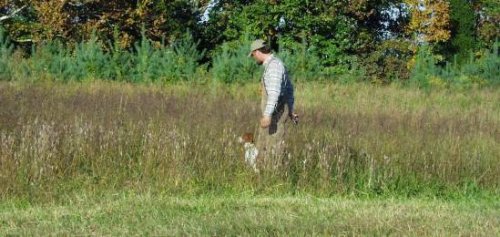
Going in for the flush,
blank gun in hand.
Occasionally the handler
will ask the scout to lead the dog away from the area while the handler
re-mounts.
If a dog does not
demonstrate steadiness to wing and shot he or she is usually
"picked up", or removed from that brace, by the handler and
leashed or harnessed.
THE GOAL
The ultimate goal is for
the dog to find birds in an excellent hunting method, show style on
point, steadiness to wing and shot, and to finish as strong as he or she
started. I like the quote:
"To measure up to
field trial standards a bird dog must posses speed, range and style. He
must manifest method and an intelligent pattern in his negotiation of
the terrain. He must exhibit character, animation, independence, and
initiative. His work must be incisive and merry. He must show intensity
and steadiness on game. He must handle well. The ideal bird dog, in
short, is the polished product, a high-class, thoroughly broken
performer that excites constant admiration by the excellence of his
work."
William F. Brown
"Field Trials - History Management and Judging Standards"
New Revised Edition
American Field Publishing Company
1987
AWARDS
At the conclusion of a day
the completed stakes for that day are usually awarded their placements.
AKC awards a ribbon for 1st through 4th place. American Field
Championships have winner and runner up with possible honorable
mentions. AKC points are accumulated to achieve levels of accomplishment
such as AKC Field Champion (FC) or AKC Amateur Field Champion (AFC).

Pictures for the
magazine
Ok, it's time to hitch up
the horse trailer, load up the dogs and horses, go home, take care of
the dogs and horses, get a long deserved bath and go to bed. After all,
next weekend you have another trial to go to! |

